CELEBRATING COLUMBUS’ BLACK HISTORY

JANUARY / FEBRUARY 2023 INSIDE: Meet a few of Central Ohio’s Most Influential Lawyers & Bankers MAHOGANY Columbus
Michael B. Coleman FORMER MAYOR’S TRANSFORMATIVE NEW LEADERSHIP ROLE
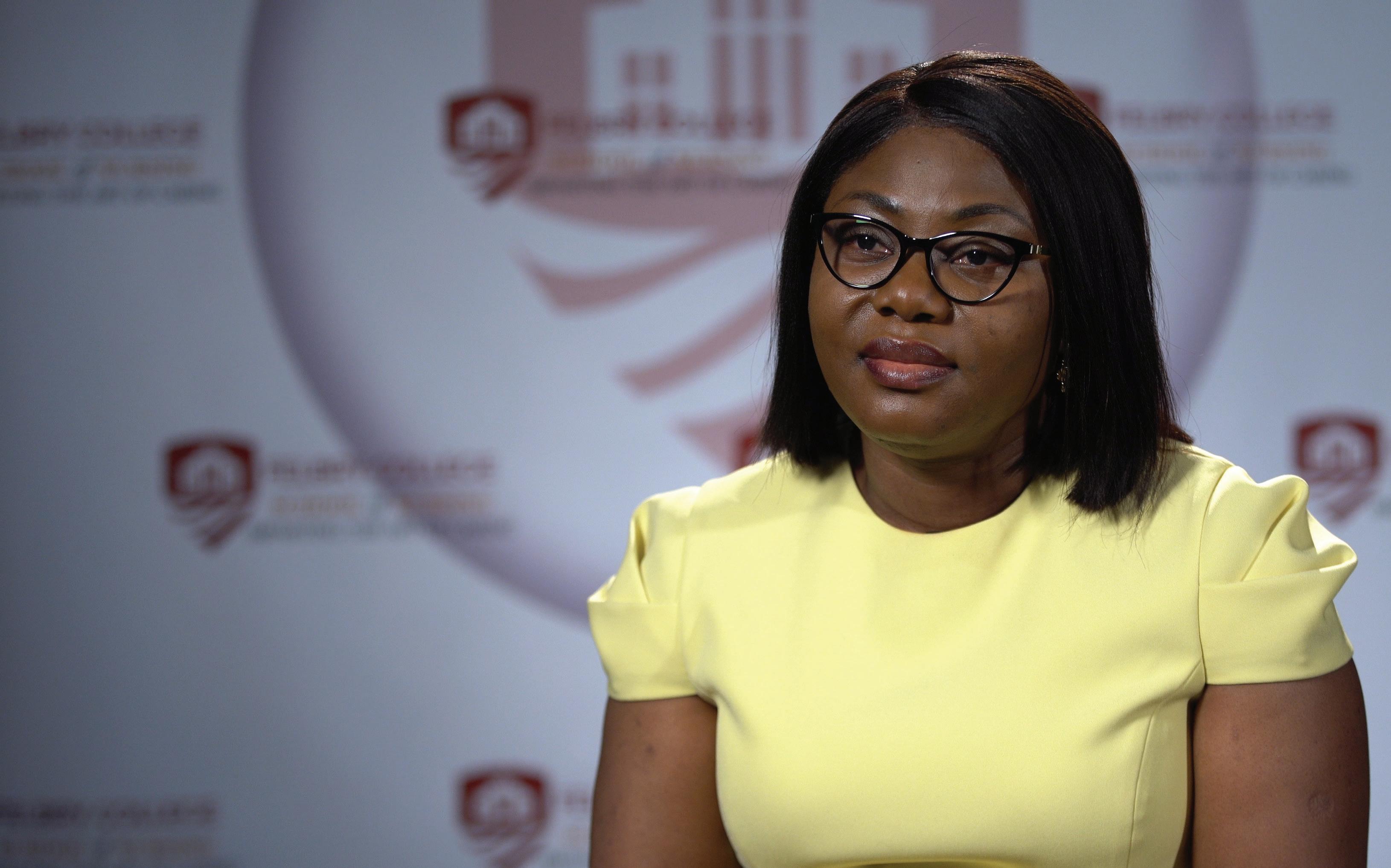
Businesses are full of stress, but if you have a partner like Telhio, it will be much easier. Feyiseyo Tolani, CEO
On-Site
Nursing At Telhio Credit Union we take your business banking personally. Telhio is open to anyone who lives, works, worships or goes to school in Central and Southwest Ohio. This credit union is federally insured by the National Credit Union Administration. Additional coverage up to $250,000 provided to consumer account holders by Excess Share Insurance Corporation, a licensed insurance company. Membership eligibility requirements apply. All loans are subject to approval based upon creditworthiness, qualifications and collateral conditions. *The creditor and issuer of these cards is Elan Financial Services, pursuant to separate licenses from Visa U.S.A. Inc., and Mastercard International Incorporated. Mastercard is a registered trademark, and the circles design is a trademark of Mastercard International Incorporated. Learn more at telhio.org BUSINESS SERVICES: • Commercial Loans • Competitive Money Market Rates • Corporate Credit Card Services* • Merchant, Payroll and Remote Deposit Service EMPLOYEE SERVICES: • Direct Deposit Accounts • Interest-Bearing Health Savings Accounts • Credit Cards* • Loans • Wealth Management
and
Administrator of Felbry College of



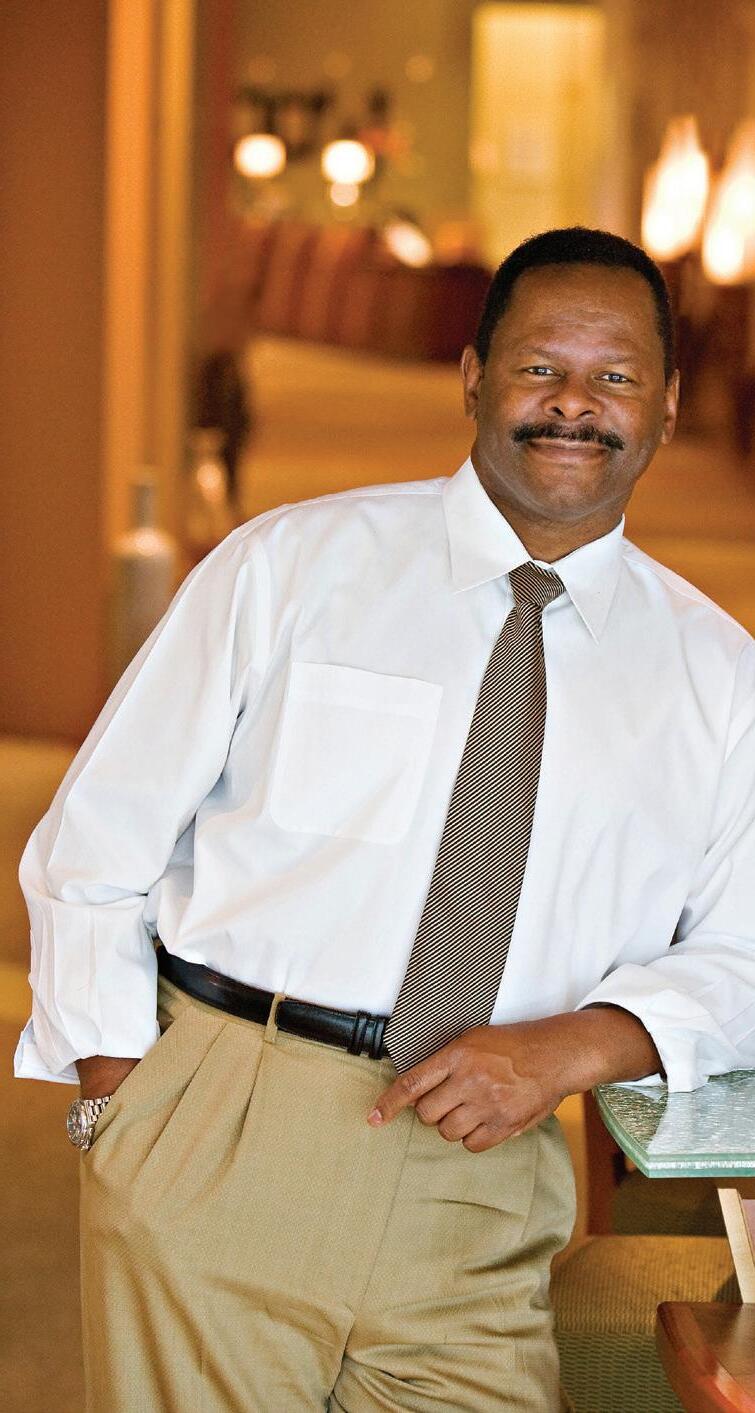
1 Welcome to MAHOGANY Columbus CENTRAL OHIO’S NEW URBAN LIFESTYLE MAGAZINE JANUARY / FEBRUARY 2023
FOUNDER/PUBLISHER:
C. Sunny Martin
EXECUTIVE ASSISTANT:
Ajah Potts
DIRECTOR OF DEVELOPMENT: Steve Clark
PHOTOGRAPHY:
Ira Graham
Official Photographer
GRAPHIC PRODUCTION:
Melissa Burkheimer Studios
PRINTING PRODUCTION:
Post Printing
EDITORIAL BOARD ADVISORS:
Roger D. Blackwell, PhD.
Alisha Clara Martin
Sean Grant
Jennifer Walton, MBA
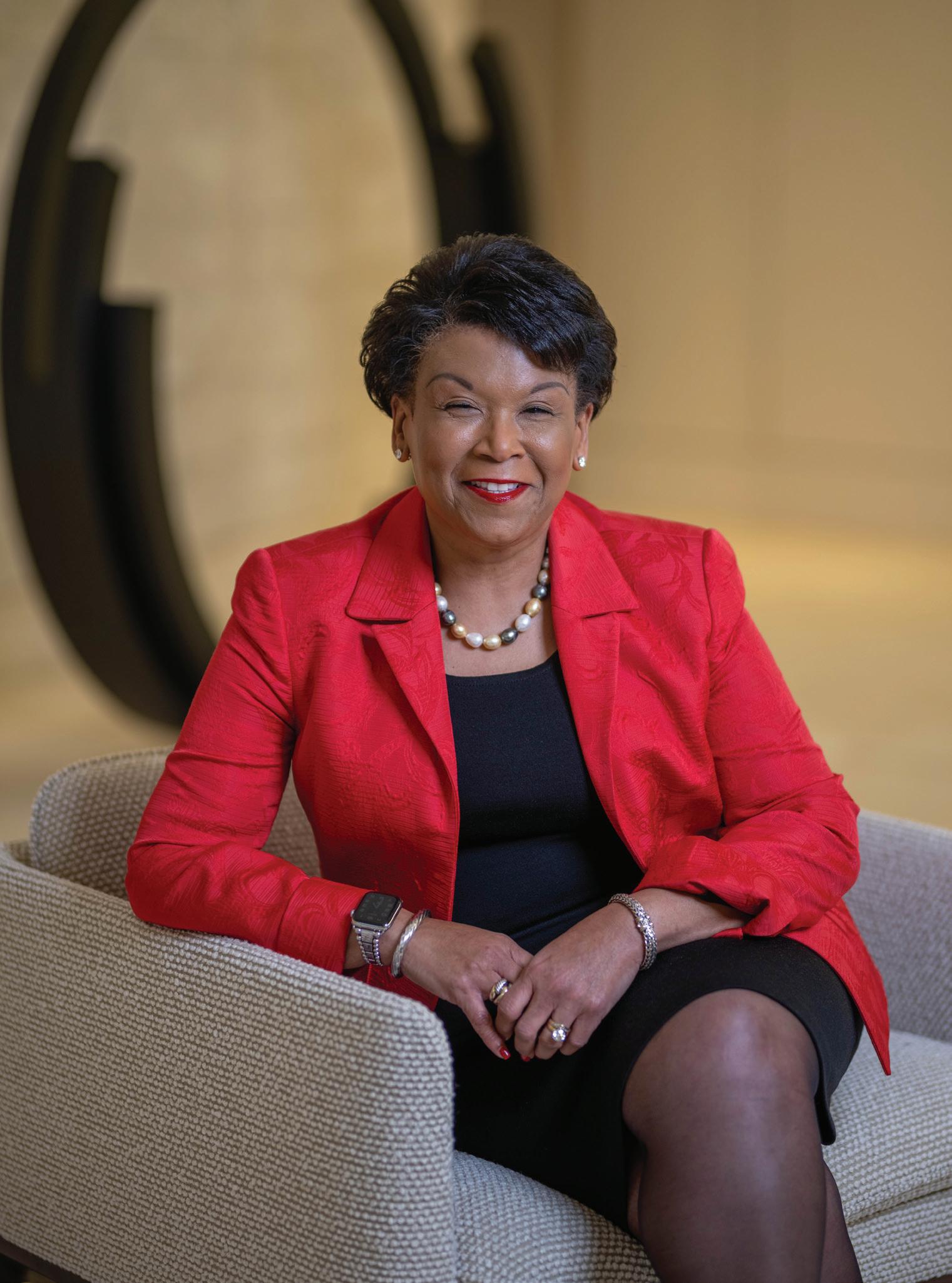
Kay Wilson
ADVERTISING INQUIRES: Sunny@CSunnyMartin.com
614-937-3390
EVENT
2
Phone:
NEWS/PRESS
MAHOGANY COLUMBUS IS PUBLISHED BY: Mahogany Media Group LLC Bi-monthly with Six (6) Issues a Year, January/February March/April, June/ July, August/September, November/ December All contents of this magazine are copyrighted© 2023 Mahogany Media Group LLC. All rights reserved. Reproduction or use without permission of any editorial or graphic content in any manner is strictly prohibited. Publisher assumes no responsibility whatsoever for return of unsolicited articles or materials. Our address is 6902 Willow Bloom Drive, canal Winchester, Ohio 43110. Periodical postage paid at Columbus, Ohio. 6 Important Message from Roott 12 Columbus’ Black History 14 Meet A Few of Columbus’ Most Influential Bank Executives 18 Meet A Few of Columbus’ Most Influential Lawyers 30 Dr. Frederic Bertley: The Man Behind the Magic at COSI 34 Why Joe Motil Wants to Be Your Next Mayor of Columbus 38 The Kipp Columbus H.S. Dance Teams Shines What’s Up Inside MAHOGANY Columbus Yvette McGee Brown Partner-In-Charge of Diversity & Inclusion Jones, Day Law Firm - 18
RELEASES: Sunny@CSunnyMartin.com
Michael B. Coleman, FORMER MAYOR’S TRANSFORMATIVE NEW LEADERSHIP ROLE - 19

Our Monthly Featured Columnists
JONATHAN BEARD - 42
Reflections on a Disappearing Black Columbus
DR. CHRIS BROWN - 44
The Danger of Silence
Hypertension
MARK CALDWELL - 46
Branding Your Small Business
REBECCA COLLINS - 47
Keepin’ It real In Real Estate
LYNETTE DAVID - 48
Fulfilling Your Godly Purpose in 2023
DR. JESSICA A. JOHNSON - 41
Teaching Black History in Our Schools
RUBY SCHROEDER - 48
Why Become a Travel Advisor
DR. YVETTE WEIR - 45
The Black Single Woman’s Dilemma,
3
Publisher’s Memo…
Years ago, someone referred to me as a modern-day griot. I was not familiar with the word (pronounced gree-oh) and was told that back in the motherland of Africa griots were highly respected individuals that were the storytellers and narrators of oral and written traditions, history, and culture.
Well, I guess the shoe fits! Such has been my life for the past thirty plus years putting ink on paper and showcasing the uplifting positive stories and profiles of People of Color (POC). I’ve been blessed to highlight many of those stories, images, and profiles in my previous “Who’s Who” annual directories, published all over the United States. Additionally, I’ve published an assortment of other popular books including the likes of “Columbus’ Black Heritage - The Bicentennial Edition”, “100 Years of African American Achievement at The Ohio State University”, and “Black Mayors in America” editions and “Black Judges in America” books.
Today, it gives me such a thrill to introduce you to Mahogany Columbus your new Urban Lifestyle bi-monthly magazine. However, we’re much more than a magazine. We’re in print, online on many of the social platforms including Facebook, Instagram, and LinkedIn posting content each and every day! On Facebook and Instagram follow us @MahoganyColumbus. On LinkedIn we can be found at Mahogany Media Group.
With each issue month, you’ll find our in-person presence hosting monthly Networking Mixers all around Central Ohio as we roll out each issue. January/February issue, March/April Issue, May/June Issue, July/August issue, September/October Issue, and November/December Issue (6-annual issues in total.
Also, coming in March of 2023, look out for “What’s Up Columbus”. it’s our new weekly upcoming Events and Career & Jobs Announcement Calendar! You’ll be delighted to be informed of the exciting events, restaurant openings, concerts, seminars, book releases, and diverse job & career opportunities available to you right here in Central Ohio.
In closing, we’re excited to have recruited a bevy of subject-matter experts professionals and writers to add their voice to matters influencing our lives. We’ve added their contact information should you want to reach out to them. Additionally, we’d like to sincerely thank JPMorgan Chase Bank, the law firm of Ice Miller, and the new Porsche Columbus dealership for trusting and supporting our vision for Mahogany Columbus your new Urban Lifestyle magazine!
C. SUNNY MARTIN Founder/Managing Partner Mahogany Media Group LLC

4
Trailblazer. Leader. Litigator. Advocate.
Jones Day congratulates our partner, friend, and former Ohio Supreme Court Justice Yvette McGee Brown on her recognition as a featured attorney of color in Mahogany Columbus, and we thank her for her tireless advocacy, commitment to public service, and dedication to our Firm and its clients.
Why Jones Day? A true partnership based on communication, collaboration, conviction, and talent across specialties and jurisdictions.

5 2400 LAWYERS. 42 LOCATIONS. 5 CONTINENTS. ONE FIRM WORLDWIDE®. JONESDAY.COM

6
Photo by Ira Graham
A Solution to Columbus’ Black Maternal & Infant Mortality Epidemic
The Why…
In May of 2017, Jessica M. Roach, a Nurse, Doula, Midwife and public health professional made a call that would change the way our country viewed the Black maternal and infant mortality epidemic. She made the call because she felt that Black families had endured enough trauma in their pregnancy and childbirth experiences. Jessica, during her 20 years as a Birthworker had never lost a baby or mother, but she had witnessed and experienced this same trauma.
She became frustrated by the ongoing mistreatment, inaccurate medical information, and other unnecessary interventions born from institutionalized obstetric racism. This racism includes comments from physicians during labor that say “…our little Black babies are just a little weaker.”, or that “Black women are just at higher risk for problems.” without any explanation or clinical rationale. Jessica knew that the result of this malpractice or obstetric racism has a disproportionately adverse impact on Black families.
For Jessica, each circumstance was reminiscent of her own highrisk pregnancy. At the time, she did not have any unmet social determinants of health or “risk factors” that are commonly linked to pregnancy comorbidities or
mortality. She was a middle-class professional, who was educated and married, with stable housing, food and healthcare access, but… she was Black too.
Regardless, she refused to believe that being Black was a health risk factor. In fact, Jessica has said repeatedly that “…there is nothing wrong with us, genetically or biologically. You really can’t say that poverty or being unmarried is a cause, considering we have these health issues regardless of our income and marital status”. Race alone, in her opinion, was not the health risk factor, racism was. Knowing the political and medical community was going to deny racism as the primary health risk factor, Jessica turned to a longtime colleague and friend who had dedicated his life and career to our community, unapologetically.
The Call…
In May 2017, Jessica made a call that would change the way our country viewed the Black maternal and infant mortality epidemic. She called Dorian L. Wingard, a c-suite and senior level public administrator, human services expert, community advocate, and public policy professional. Dorian is a known member of the Black Columbus community. His tenacity and dedication to the strengthening of Black families has always
been at the forefront of his professional and personal experiences.
When Jessica called him about the abysmal rates by which Black infants and mothers were dying, as well as significant concerns about the City of Columbus initiative, he wasn’t surprised. He like so many others “knew” but didn’t really “know” just how extensive the epidemic had become. He also remained very supportive but had question. The answers while infuriating, were not surprising to him. He and Jessica shared the same value constructs rooted in the tradition of the Black family and Black communities. Dorian and Jessica decided to combine their professional and clinical experience in commitment to developing what ROOTT has become today.
The Action…
For nearly a year, Jessica reached out to Columbus City leaders, Columbus Public Health, and the newly formed CelebrateOne to discuss the disproportionate Black infant mortality issue. She also wanted to collaborate and provide solutions to directly rebuke the obstetric racism, central to the cause of the growing health disparity gap between Black and white infants. None of the official entities would engage her and denied that obstetric (systemic/institutional) racism was the primary issue. Moreover,
7
SPECIAL MESSAGE FROM ROOTT:
SPECIAL MESSAGE FROM ROOTT continued from page 10:
age 5 of the children if necessary. Average engagement period for a family is 18-24 months.
these same leaders had committed resources to focusing on the ABCs of Safe Sleep. It was the combination of these factors that gave birth to ROOTT.
Restoring Our Own Through
Transformation, known by its national and local communities and partners as ROOTT. ROOTT is a collective of concerned Black Families, community members, advocates & interdisciplinary professionals dedicated to decreasing maternal & infant mortality in Ohio. ROOTT’s mission is to comprehensively restore our collective well-being through collaboration, resource allocation, research & empowerment, in order to meet the needs of parents & families within communities.
ROOTT understands that negative stereotypes and images have impacted our existence in the United States for centuries and will for some time to come. False stories about Black families have been built into all life domains, including the medical and public health professions. These narratives often list being poor, uneducated, drug and/or alcohol abusers, and absent fathers as the causes of
the disproportionate rate of Black maternal and infant mortality. It is through this lens of deficit that we are viewed as broken, unhealthy, and not given the same respect or autonomy over our decisions as any other race of people. Furthermore, it is the same racist ideology that has continued to guide public obstetric health policy that not only supports the theory of Black deficit but upholds it. ROOTT rejected this notion.
The Impact…
Since January 2018, ROOTT has served approximately 700 families through its Perinatal Support Doula (PSD) Services. Those services include family planning, childbirth education, nutrition counseling, prenatal and postpartum health assessments and other supports when needed. ROOTT PSDs are certified through its own training model, which includes a yearlong apprenticeship.
ROOTT PSDs address both the clinical and non-clinical prenatal needs of Black families. Services can be provided throughout the entire prenatal, labor and delivery, and postpartum period, up to

Through its comprehensive health equity model for Black families, ROOTT has achieved and maintained a 0% Black maternal and infant mortality rate since its inception. Their preterm and low birth weight is less than 6%, their NICU rate is a 1/3 of the national average for Black Infants and their post-partum hemorrhage rate, one of the leading causes of maternal death, is less than 3%.
While ROOTT families enjoy these healthy birth outcomes, many Black families not served by ROOTT are not as fortunate. A recent report by the National March of Dimes, that offers letter grades to cities and states for their rate of preterm birth outcomes, gave the state of Ohio a “D” and the city of Columbus an “F” for 2021. In addition, the current report from CelebrateOne for Franklin County shows that Black infants continue to unnecessarily die, at nearly 4x the rate of white infants.
ROOTT has essentially eliminated the mortality rate among the families it serves. They believe that it is the unique ROOTT model that centers the WHOLE family, without silos that is the lead contributor successful outcomes for families. ROOTT believes Black families come with a knowledge of what they want from their experiences and is here to help families find the tools for their own re-empowerment. ROOTT is clearly helping to making Cbus great again, one Black family at a time.
8



Our local mortgage experts at Heartland Bank will guide you through the home buying process. An example monthly payment for a $215,000 loan for a 30-year fixed rate term with an Annual Percentage Rate (APR) of 6.401% as of 12/29/2022, would be 359 payments of $1,341.32 and one final payment of $1,341.61. The actual payment amount will be greater as the example payment does not include any applicable taxes and insurance premiums. Minimum credit score of 660 to qualify. Applicants will need to take a homeownership class. This special loan program is for applicants that are purchasing a home in a low to moderate income census tract or for applicants with low to moderate income. All mortgage applications are subject to credit review and approval. Actual rates may vary based on credit history. Other terms and conditions apply. Contact your nearest branch location for details. *PMI=Private Mortgage Insurance Visit us online at Heartland.Bank/Hometown Heartland Bank is pleased to offer flexible options for buyers in your area! Thinking about a new home? Or refinancing the one you already own? 300+ lawyers helping clients across Columbus and beyond. The law firm of Ice Miller is pleased to celebrate the historic and impactful career of our own Michael B. Coleman. We applaud his continued dedication to his clients, the practice of law, and the great city of Columbus, in the context of his many stellar achievements. Together, we build opportunities. Congratulations Michael
Coleman Former Mayor icemiller.com ATTORNEY ADVERTISING MATERIAL
B.
MEET THE WOMEN HELPING COLUMBUS RESIDENTS BUILD STRONGER FINANCIAL FUTURES
For Alicia Jones and Erica Wicks, becoming Chase Community Managers has been the perfect way for them to blend their personal passions with their professional work.

As Chase Community Managers, Jones and Wicks work to break down systemic barriers by helping people gain access to financial services ranging from opening a bank account to explore mortgage financing options and small business loans. They work directly with local residents, community lenders, nonprofits, and small businesses to increase awareness to resources, financial tools, and services to help them forge a strong financial future.
They recently sat down with us to talk about how their work helps Columbus residents – and communities.
ALICIA JONES, VICE PRESIDENT, COMMUNITY MANAGER
The moment she felt the impact of her work: “Rewarding things happen every day, to be honest. That may sound like a cliché’, but when you’re doing something that you’re passionate about and you’re doing something that matters, it’s really a remarkable feeling. We’re helping families get into homes, helping entrepreneurs open small businesses, and providing the tools and resources needed to help people build generational wealth and reach their financial goals.”
ERICA WICKS, VICE PRESIDENT, COMMUNITY MANAGER
The moment she felt the impact of her work: “Not long ago, I talked to a person at a financial health event who was having challenges getting into traditional banking. I connected him to someone in our local branch to help put him on the path to achieving his financial goals including starting a business. Seeing that happen was that moment of: ‘Yep. This is it. We’re doing the work, impactful work.”
10
Investing in Ohio
We’re increasing access to college education, high-tech training and purposeful careers for Buckeyes. That’s because we know enabling all people to reach their full potential makes our communities stronger.
jpmorganchase.com/ohio

11
Columbus’ African American History-East Side
By Attorney John Waddy
the city near factories, railroad tracks, along the banks of the Scioto River and in rural areas adjacent to downtown.
In the beginning, African Americans were primarily employed as farmers and domestic servants for wealthy White residents. Others worked as waiters, saloon bartenders and deliverymen. African Americans worked on farms and in foundries, brickyards, lumber mills and factories. African Americans provided a lot of the labor that built structures throughout Columbus.
nue. The class of African American workers and residents included laborers to professionals. One could find African American physicians, dentists, educators, attorneys, nurses, policemen, firemen, barbers, artists, brick masons, musicians, carpenters and beauticians. African Americans built beautiful homes. Also, African Americans built, owned and operated hotels, stores, churches, beauty shops, barber shops, real estate offices, insurance agencies, laundries, gas stations, hat shops, restaurants and separate and unequal “colored” schools. African American entrepreneurs made African Americans less dependent upon Whites for employment and economic prosperity. African Americans had pride in their neighborhoods and themselves.
From slavery to Columbus they came, African Americans fleeing the South (mostly the Carolinas, Virginia, Georgia, Alabama, Kentucky and Tennessee) and settling in “free states” like Ohio. Columbus was a natural choice because it was one of the “underground railroad lines” for slaves traveling to other free states and to anti-slavery Canada. The African Americans who chose, before and after slavery, to make Columbus their homes are those who shaped today’s predominantly African American neighborhoods.
Freedom did not mean “equal opportunity” in Columbus. While “downtown” and predominantly White neighborhoods welcomed African Americans as laborers, they did not welcome African Americans as neighbors. Hence, African Americans mostly settled outside
By the thirties, the East Side was the largest predominantly African American neighborhood in Columbus. It rose from lawful and “de facto” segregation. The East Side included African American communities like the impoverished “Blackberry Patch”, which in 1941 was torn down to make way for “Poindexter Village” the third public housing community ever built in the country. Poindexter Village is now scheduled for demolition. A second notable community is “The American Addition”, a community currently experiencing new housing starts. Also, two East Side streets, Long Street and Mount Vernon Avenue, offered African Americans the most in the way of homes, commerce and entertainment.
By the fifties, African Americans of diverse cultural and educational backgrounds resided and worked on the East Side, particularly on Long Street and Mt. Vernon Ave-
Some African American neighborhoods experienced economic prosperity well into the sixties and early seventies. This prosperity not only resulted from the hard work and resourcefulness of African Americans but also because of the contributions of Whites, primarily Jews and Italians, who lived side–byside with African Americans and owned and operated businesses in African American neighborhoods. The partnership between African Americans and Whites enhanced the vibrancy and appeal of African American neighborhoods.
In the late sixties and early seventies events, old and new, combined to end the rising prosperity and forever change African American neighborhoods, especially the East Side of Columbus. While many events may have defined today’s African American neighborhoods, none played any larger roles than the Supreme Court’s decision in Brown v. Board of Education of Topeka; the completion of Inter-
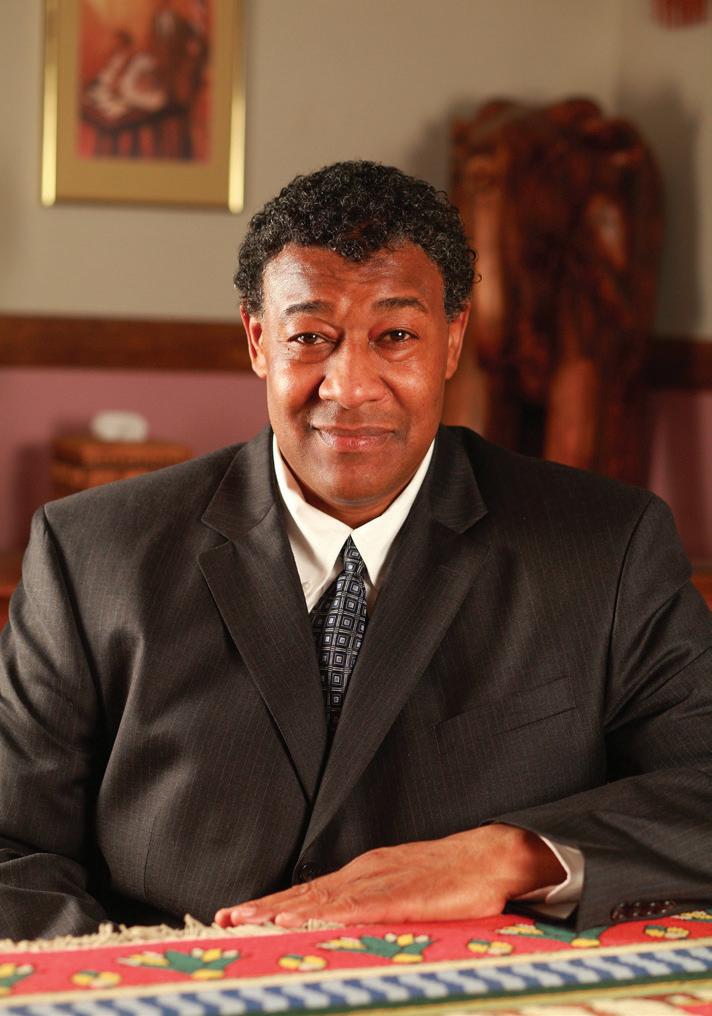
12
state 71; and the civil rights movement.
The winds of change for the sixties first began in 1954, a decade earlier, when the U.S. Supreme Court decided the landmark case of Brown v. Board of Education of Topeka, (1954). Hailed by some as the second coming of President Lincoln’s 1863 “Emancipation Proclamation”, the Court held that the race-based segregation of children into “separate but equal” public schools that violates the Equal Protection Clause of the Fourteenth Amendment was unconstitutional. The Brown decision was significant because it overturned the separate but equal doctrine established by the Court’s Plessy v. Ferguson (1896) decision where it upheld the constitutionality of state laws requiring racial segregation in private businesses (particularly railroads), under the doctrine of “separate but equal”. The Brown decision became the “tool” of integration and desegregation for the decades that followed.
In the late fifties, the winds of change in Columbus, Ohio grew stronger when political leaders designed and constructed the “Interstate 71” freeway that separated “downtown” from the East Side by cutting off many of the streets that connected the central city to the East Side. African American homes and businesses were among the many structures demolished to make way for the freeway. African Americans were displaced, and businesses and employment were lost forever. In 1962 the portion of newly constructed Interstate 71 had reached Fifth Avenue in August, and it reached downtown in November. Hence, began the “period of separation “and “disenfranchisement” of East Side African Ameri-
cans that many feel continues to exist today.
The late sixties ushered in a strong civil rights movement, a loud voice for equal rights and opportunities for African Americans.
Leaders of the civil rights movement demanded the yet unrealized rights of integration and desegregation ordered in Brown. Where segregation once forced most African Americans to live and work only in predominantly African American neighborhoods, the force of the civil rights movement gave more African Americans the opportunity to live and work in predominantly White neighborhoods, including downtown Columbus.

The combination of the enforcement of the Brown decision; the fleeting success of the civil rights movement; the unrest from the assassination of Dr. Martin Luther King; and the isolation resulting from Interstate 71 had a profound and lasting impact on the East Side. With integration and desegregation, African Americans moved from the East Side. Some of our brightest and most talented African American residents and business owners left forever. Simultaneously, the partnerships between African Americans and Whites, particularly Jews, gradually fractured (partly because of race-based violence and rioting in the sixties) then broke, resulting in most Whites closing their businesses and moving out forever. The foregoing, along with neglect of political leaders, would
be the blueprint for the decline of the East Side for decades to come.
Rather than be known for its resilient residents who have stayed and kept hope alive, the East Side once became known for its boarded-up and abandoned homes and businesses; black-on-black crime; “corner stores” that sold outdated and unhealthy food and beer; a decaying infra structure that deterred new development; and a population that had declined by two thirds in fifty years. This is not the East Side that we see today.
Today, the East Side of Columbus, Ohio is experiencing a great renaissance. Life springs anew with colorful murals on abandoned buildings. Music, once silenced, now again plays in the Lincoln Theater and continues to play in the King Art Complex. Newcomers have moved into new and old housing, and many have started businesses in projects like the Hamilton Park Place Condominiums, NOBO’s single-family homes and condominiums on North 21st Street, and the Gideon Gateway Building. The Whitney townhouses and the Affordable Housing Trust’s headquarters offices. The East side is making a grand comeback!
13
Meet a Few of CENTRAL OHIO’S
Most Infuential Bankers
With nearly 20 years of leadership experience in the financial industry, Derrick Bailey is the President of Telhio Credit Union, a $1.3 billion financial cooperative. He was named President in 2022. Derrick joined Telhio Credit Union in 2013 after several years in the wholesale mortgage industry and serving as a business banker for a regional bank. Upon joining the credit union, Derrick led the commercial lending division to become the top-performing division in less than six months, eventually leading Telhio to become a top SBA lender in the market (#2 overall, #1 credit union). Derrick joined the executive team
of Telhio in 2016 and provided the same leadership to the mortgage division of the company, leading Telhio to become one of the top consumer and commercial mortgage lenders in central Ohio. In his most recent role of Chief Sales Officer, Derrick led all revenue-generating aspects of Telhio including consumer and business banking and mortgage, lending and FinTech program management. Derrick also led Telhio’s involvement as a Community Development Financial Institutions Fund (CDFI), which helps invest federal and private sector dollars to support economically disadvantaged communities. Telhio is one of the largest credit unions in the
country with this designation. Outside of his work at Telhio, Derrick served on the board of directors, including serving on the executive committee as treasurer, for Columbus Area Integrated Health Services. He has been a member and president of the board of directors of the March of Dimes. He also serves as a member of the Small Lender Committee of the National Association of Government Guaranteed Lenders. Derrick earned his master’s degree in business administration from Capital University and his bachelor’s degree in business administration from the University of Toledo. He and his family live in Blacklick, Ohio.
14
Derrick Bailey President
Telhio Credit Union

15
Photo by Ira Graham
Alicia M. Jones
Vice President, Community Manager
JPMorgan Chase
Alicia M. Jones has been with JPMorgan Chase for 11 years and is a local ambassador for Chase. As a Community Manager for Columbus, her mission is to build relationships with key local leaders, nonprofit partners and small businesses at the neighborhood level. Her goal in Central Ohio is to improve financial health among residents, businesses and the community through identifying programming, resources, and collaboration opportunities. Alicia has more than a decade of experience leading teams in the financial industry. Alicia is passionate about serving the community, mentorship, and helping to develop
 Jay Coleman Vice President, Senior Treasury Management Heartland Bank
Jay Coleman Vice President, Senior Treasury Management Heartland Bank
Jay Coleman began his financial services career in 1994 as a teller with National City Bank in Toledo, OH. Jay has worked for five other institutions and his background includes branch management, underwriting, commercial lending, treasury management sales, commercial sales management, product management, and acquisition logistics.
Outside of work Jay is enjoys being involved in the Columbus community through mentoring others and well as participating in civic organizations. He is a past board member of Stonewall Columbus and served as both secretary and treasurer over his five-year tenure.

the next generation with the necessary skills to be successful both in life and in the workforce. Alicia sits on the BOLD (Black Organization for Leadership Development) leadership board for Chase. She also serves as Senior Co-Chair of the Chase Columbus Culture Council, and is an active member of WELD (Women for Economic and Leadership Development) and Delta Sigma Theta Sorority Inc.
Ohio is home for Alicia. She was born in Toledo, started her career in Cleveland, and now calls Columbus home. Alicia enjoys spending time with her family, working out, and traveling.
Other past Board memberships include: The United Way of Sandusky, CommunityHealth Services, and he is currently the board treasurer for FellaShip Mentoring LLC. Jay is proud member of Phi Beta Sigma Fraternity, Inc. and serves as the advisor to the undergraduate chapter at the University of Toledo. Jay earned a B.A. in Business Administration from Lourdes University; M.A. in Organizational Management from Bluffton University, an MBA from Mount Vernon Nazarene University, and is a current a doctoral student. Jay also earned a graduate certificate in Diversity, Equity, and Inclusion in the Workplace (DE&I) from the University of South Florida.
16
Matthew Glover Vice President, Community Development PNC Bank
Matthew Glover serves as PNC Bank’s vice president in Community Development Banking for central Ohio. In his role, Glover strategically positions the bank to impact and influence the workforce and marketplace by coordinating relationships with low to moderate income communities. Glover collaborates with local agencies to identify opportunities to support sustainable economic development and to promote the economic vitality of communities in need through philanthropy, financial education and volunteerism. This focus also includes helping to lead
Erica Wicks
the local implementation of PNC’s $88 billion Community Benefits Plan, a four-year commitment to advance affordable home ownership, small business, community investment and charitable giving.
A Columbus native, Glover earned a bachelor’s degree at Eastern Kentucky University and a Master of Business Administration degree from Ohio Dominican University. Glover serves as board member for Community Housing Network, Greater Columbus Community Helping Hands and IMPACT Community Action nonprofits in Franklin County.

Vice President, Community Manager JPMorgan Chase
Erica Wicks is a thought leader with expertise in community development, compliance, project management and grant administration. Her professional experience spans the nonprofit, private and public sectors. She is recognized for her effective communication and strategic collaboration with internal and external stakeholders. Especially skilled at identifying, enhancing, and implementing programs and solutions that fulfill the needs and requirements of multiple parties, Erica’s passion shines through influencing and
addressing community needs. Erica has been with the bank for eight years, including on the Community Reinvestment, Community Partnerships team. Her leadership includes involvement with several organizations, including ULI Columbus (Treasurer), Fisher College of Business Alumni Board, Neighborhood School Development Partnership, Ward YMCA Advisory Board and African American Leadership Academy 2022 Fellow.
She is an alumna of The Ohio State University where she com-
At PNC, Glover serves on the Central Ohio Regional Diversity & Inclusion Council and Line of Business D&I Council. He also is a recipient of the Diversity MBA 2020 Top 100 Under age 50 Emerging Leaders for 2020 for his impact in the community, diversity and inclusion and enhancing corporate culture.
pleted her undergraduate studies and earned her master’s degrees in City and Regional Planning and Public Administration.

17

18
Photo by Ira Graham
Meet a Few of CENTRAL OHIO’S
Most Infuential Lawyers
Yvette McGee Brown
Partner-In-Charge of Diversity, Inclusion, and Advancement Jones Day Global Law Firm
Aseries of firsts define the judicial and professional career of Yvette McGee Brown. She was the first African American woman elected to the Franklin County Common Pleas Court in 1992. She was the founding president of the Center for Child and Family Advocacy at Nationwide Children’s Hospital. And, in January 2011, she became the first African American woman to serve as a Justice on the Supreme Court of Ohio. Today, Yvette is the Partner-in-charge of Diversity, Inclusion, and Advancement at the global law firm Jones Day and a partner in the Business and Tort Litigation practice where she represents clients in complex litigation, corporate and government investigations, and appellate matters.
Yvette is an arbitrator with the American Arbitration Association serving on complex commercial panels. In addition, she is an active
community and corporate leader, serving on public company and non-profit boards. She serves on the board of directors for Encova Mutual Insurance Group, The Jeffrey Company, KIPP Columbus, and Chair of the African American Leadership Academy. She has also served on the board of directors for Ohio University, M/I Homes, Fifth Third Bank of Central Ohio, The Dave Thomas Foundation for Adoption, United Way of Central Ohio, The Ohio State University Alumni Association and the YWCA Columbus.
Yvette was selected as one of 500 Leading Litigators in America for 2023 by Lawdragon. She is also listed annually in The Best Lawyers in America, including 2020 Lawyer of the Year; BTI 2021 Client Service All-Star; and The American Lawyer recently recognized her as a 2021 Midwest Trailblazer.
Crain’s Cleveland Business recognized Yvette as a 2022 Notable Executive in Diversity, Equity, and Inclusion. Savoy Magazine included her as one of 2019’s Most Influential Women in Corporate America, and she was honored by The American Red Cross as Humanitarian of the Year, 2019. Yvette has been inducted into the Ohio Women’s Hall of Fame and the Central Ohio Business Hall of Fame
A native of Columbus City Schools, Yvette graduated from Ohio University with a degree in Journalism/Public Relations, followed by her Juris Doctorate from The Ohio State University Moritz College of Law. She has honorary degrees from Urbana University, Ohio Dominican University, and Wilberforce University.
Yvette is married to Tony Brown, a retired educator. They have three children and two grandchildren.
19
Michael B. Coleman
Former Mayor of Columbus Partner - Ice Miller Law Firm
Michael B. Coleman has established a national reputation as a transformational leader in business, law, government, and the civic arena. Skilled at bringing people together, Michael has a history of collaboration craftsmanship leading to viable solutions of complex problems. His long history of transformational leadership is manifested in leading roles in a nearly 400-attorney law firm, corporate board responsibility, and as the City of Columbus’ longest-serving and first African American mayor. Known as a progressive leader and a pro-business mayor, Michael played an instrumental role in expanding business and employment opportunities and in making Columbus the sought-after business destination it is today.
Michael’s leadership in law is recognized through his role as Partnerin-Charge of Ice Miller’s Government Law Group and listing as a Government Relations Practice Best Lawyer in America in 2020, 2021 and 2022. Michael blends advocacy with strategy to create dynamic partnerships between business, government, real estate development, and urban policy furthering the city’s vibrant and thriving reputation. Michael represented 5 of the region’s top 10 real estate developments in 2019 and some of the city’s largest developers in 2020, 2021 and 2022 totaling approximately $1B in real estate development value. Michael’s leadership in business is evidenced by his work on the board of directors of Advanced Drainage Systems (NYSE: WMS) serving as
the chair of the Sustainability Committee. Michael also serves as an organizing board member of Adelphi Bank, an anticipated minority-owned and controlled bank.
In addition, Michael holds board positions with multiple non-profit organizations including OhioHealth, Ohio Mayors Alliance Foundation, Columbus Museum of Art, and KIPP Columbus Schools. He is a founding member of the African American Mayors Association, and Chair of the Board of Advisors of The Ohio State University’s John Glenn College of Public Affairs. Michael is immediate past chair of The Columbus Downtown Development Corporation and serves as a member of the Columbus Chamber of Commerce until the end of 2022.
As a four-term Mayor, Michael built visions, collaborations, and strategies that consistently exceeded goals. His impact reached from revitalizing forgotten neighborhoods to reimagining the entire downtown landscape, saving the city from financial ruin, and advancing forward-thinking concepts to inspire a smarter, stronger, and more sustainable capital city. Facilitating these achievements required managing annual capital and operating budgets of approximately $2B, leadership of 9,000 employees, and acquisition of $7B in private investment.
Prior to serving as Mayor, Michael was a partner with Schottenstein Zox & Dunn Co., LPA, which later combined with Ice Miller in 2012. Michael earned his bachelor’s
degree in Political Science from the University of Cincinnati and his Law degree from the University of Dayton School of Law, and he is the recipient of six honorary Doctorate degrees. Michael is a prolific public speaker on topics such as economic development, neighborhood revitalization, environmental stewardship, leadership challenges, and racial reconciliation. In addition, his expertise in the areas of leadership, sustainability, and urban economic development has been cited in multiple books and other publications.
Michael has been recognized nationally with numerous honors and awards including Ebony Magazine’s Power 100 designation, The International Economic Development Council (IEDC) Chairman’s Award for Lifetime Achievement in Economic Development, the National Urban League Living Legend Award, and the Columbus Chamber of Commerce Columbus Award. He is admitted to the Library of Congress as a History Maker. Michael is consistently recognized by local publications as one of Columbus’ most influential business leaders.
Numerous foundations, awards, scholarships, and building dedications have been named after him, including The Michael B. Coleman Government Center, public spaces, and other structures. Michael has recently been admitted to the Junior Achievement Business Leaders Hall of Fame.
A father of three, Michael and his wife, Janelle, reside in Central Ohio.
20

21
Photo by Ira Graham
Meet a Few of CENTRAL OHIO’S
Most Infuential Lawyers
Luke A. Fedlam Partner
Porter Wright
Luke is a protector, educator and national resource for athletes at all levels and phases of their career. With nearly 20 years of experience working with athletes, he leads Porter Wright’s Sports Law practice as a non-agent sports attorney. He approaches working with each athlete as an individual, but collaboratively incorporates their family and team of advisors into any opportunity or challenge. With a well-rounded approach to supporting each athlete, Luke brings the objective & balanced counsel that is essential to every opportunity.
He regularly advises and counsels a wide range of clients – from high school student-athletes transitioning into college or professional sports, to college athletes managing the name, image and likeness (NIL) environment, to professional athletes and retired athletes as
well. He diligently works with each level of athletes to not only educate them, but to help them create their game plan for life during and after sports.
In 2015, Luke took the next step in evolving his daily work with athletes into beneficial educational programs by launching Anomaly Sports Group. Anomaly is a recognized industry resource in college athletics and professional sports that develops athletes for life and business opportunities outside their sport. With a shared passion for athlete protection and professional development, Porter Wright works in tandem with Anomaly as an educational resource by providing athletic departments with the essential protective education that helps to prepare their student-athletes for all of life’s opportunities (including NIL). Anomaly has worked with the NCAA and uni-
versity athletic departments across the country, as well as multiple NFL teams, the NBA G League and other organizations in their player engagement programming. In addition, Luke serves as a co-executive director of the College Basketball Parents Association (CBPA), an organization focused on educating and providing resources to NCAA college basketball parents.
Luke has received many honors and awards, Best Lawyers to Watch in America, Ohio Super Lawyers, Columbus Business
First, 40 Under 40, The Ohio State University Moritz College of Law Outstanding Recent Alumnus Award and many more. Luke also is involved in the community and is a Board of Trustees member for the Columbus Clippers and sits on Capital University Board of Trustees.
22

23
Photo by Ira Graham

24
Photo by Ira Graham
Janica Pierce Tucker
Partner in Charge

Taft Law Firm Columbus Office

Janica oversees the strategy, growth, and client service of the Taft Columbus law firm. She serves in several leadership capacities at Taft and in the community, including as a Member of Taft’s Executive Committee, Co-Chair of the firm’s Diversity & Inclusion Committee, Chair of the Columbus Legal Aid Society Board, and Board Member of
planning, policy implementation and analysis, review of public records and tenure decisions. She also works closely with executives regarding compensation and other employment-related issues. She also represents employers in employment claims such as sexual harassment, discrimination, retaliation and wrongful discharge matters. As a litigator, Janica is ac-
and the Violence Against Women Act (VAWA). She conducts internal investigations, and advises boards regarding governance, evaluation, and board training.

She has been recognized with numerous accolades throughout her tenure, including YWCA’s Women of Achievement Award, Ohio Women’s Bar Association Leading the Way Award, Columbus CEO’s Top Lawyer, Ohio Access to Justice Foundation Presidential Award, Columbus Business First’s 40 Under 40, and the Franklin County Trial Lawyers Association President’s Award.
c a n s h o p o n e i t e m t h r o u g h m u l t i p l e o u t l e t s W h y s h o u l d n ' t i n s u r a n c e b e t h e s a m e w a y ? W e f i r s t o p e n e d o u r d o o r s i n t h e b e g i n n i n g o f 2 0 1 7 i n C o l u m b u s , O h i o w i t h t h e M i s s i o n t o h e l p p r o t e c t p e o p l e a l l a r o u n d t h e c o u n t r y
W e a r e f o u n d e d b y a t e a m o f i n d i v i d u a l s w h o h a v e b e e n i n y o u r s h o e s a n d w h o h a v e a s o l i d f o u n d a t i o n o f k n o w l e d g e i n t h e i n s u r a n c e i n d u s t r y W e a r e a f a m i l y h e r e a t M i s s i o n I n s u r a n c e A g e n c y a n d w a n t t o w e l c o m e y o u t o j o i n u s i n o u r j o u r n e y h e l p i n g o t h e r s w i t h t h e i r A u t o , H o m e , L i f e a n d B u s i n e s s I n s u r a n c e N e e d s
W h o / W h a t d o w e R e p r e s e n t ?
U p f r o n t , w e ' l l s e t y o u u p w i t h t h e b e s t d e a l o u t o f o v e r 5 0 A + r a t e d c o m p a n i e s i n 2 6 + S t a t e s a n d m a k e s u r e y o u r c o v e r a g e f i t s y o u r l i f e N e v e r a g a i n d o y o u h a v e t o s h o p a r o u n d f o r i n s u r a n c e
H o w d o w e b e a t t h e c o m p e t i t i o n ?
O u r M i s s i o n i s s i m p l e W e u n d e r s t a n d t h e p a i n p o i n t s w h e n d e a l i n g w i t h i n s u r a n c e , a n d w e a r e h e r e t o e l i m i n a t e t h o s e i s s u e s t o g e t t h e b e s t q u o t e s a v a i l a b l e A t M i s s i o n I n s u r a n c e A g e n c y y o u d o n o t j u s t g e t a n a g e n t , y o u g e t a t e a m Y o u r I n s u r a n c e n e e d s a r e o u r M i s s i o n
E S T 2 0 1 7 W h o i s M i s s i o n I n s u r a n c e ? L o o k , t h e w o r l d i s c h a n g i n g . L i k e n e v e r b e f o r e , o u r l i v e s r u n o f f o f o u r c e l l p h o n e s , s o c i a l m e d i a a n d t h e i n t e r n e t . W e h a v e t h e p o w e r o f c h o i c e a n d c o n v e n i e n c e ! W e
P R O V I D I N G Y O U W I T H T H E B E S T P R O D U C T , P R I C I N G , S E R V I C E A N D C O V E R A G E !
Meet a Few of CENTRAL OHIO’S
Most Infuential Lawyers
Sean L. Walton, Jr. Attorney/Partner Walton + Brown, LLP
Sean is a talented and highly sought-after litigator who focuses his practice on complex serious personal injury, wrongful death and civil rights matters. Sean takes an aggressive and innovative approach with every case, looking to utilize his legal acumen to fight for his clients each step of the way. For his work, Sean has been named a Rising Star in Ohio by Super Lawyers, a distinction only 2.5% of attorneys receive. He has also been named Top 40 under 40 by the National Trial Lawyers, the American Society of Legal Advocates, the National Black Lawyers, and the National Academy of Personal Injury Attorneys.
Sean is a nationally respected trial attorney, frequently speaking on topics ranging from civil rights and police misconduct to trends and best practices in personal injury and civil rights litigation. For his work in advocating for victims, Sean has been interviewed or featured in national media outlets such as The Washington Post,
New York Times, NBC Nightly News, CBS Nightly News, Good Morning America, CBS This Morning, The Today Show, CNN, MSNBC, The Guardian and more. He has been named as one of ten “People to Know in the Law” by Columbus Business First magazine.
Sean holds a Bachelor of Arts Degree in Political Science with a focus in African American Studies from the University of Cincinnati, where he was a Coca-Cola Darwin T. Turner Scholar. He earned his Juris Doctor Degree from Capital University Law School while attending on the Presidential Merit Scholarship. Sean is an adjunct professor at Capital University Law School where he teaches civil rights.
2021 Barrister’s Salute, John Mercer Langston Bar Association; 2020 Graduate of the Last Decade, Capital University Law School; Rising Star, Super Lawyers; Top 40 Under 40, National Trial Law-
yers; Top 40 Under 40, National Black Lawyers; Top 40 Under 40, American Society of Legal Advocates; Top 40 Under 40, National Academy of Personal Injury Attorneys; 10 Best Attorneys - Client Satisfaction, American Institute of Personal Injury Attorneys; Who’s Who in Black Columbus; People to Know in the Law, Columbus Business First; 2017 Emerging Leader, University of Cincinnati African American Alumni Affiliate; 2017 Leadership Academy Graduate, American Association for Justice.
Sean is married to Jennifer Walton and have two daughters, Sabella Nile and Skyla Nic. The couple reside in Columbus, Ohio. Sean serves as an anti-racism and inclusion specialist with his wife’s Jennifer’s company, Sky Nile Consulting. Driven by the mission to create a future in which their daughters will not be othered, the Walton’s partner with national brands to change hearts and minds one corporate firm at a time.
26

27

28
Photo by Ira Graham
Meet a Few of CENTRAL OHIO’S
Most Infuential Lawyers
Stephen White, Esq. Chief Strategy Officer, In-House Counsel Center of Science and Industry (COSI)
Stephen White, Esq. is the Chief Strategy Officer, and serves as In-House Counsel at the Center for Science and Industry (COSI), the number one science center in the nation by USA Today. During his career, he founded the theory of Servant Learning as an engagement strategy to help bridge the “COVID Canyon” education gap with the philosophy to inspire others to dream more, do more, and become more. In his role at COSI, he is overseeing the development of optimizing the entrepreneurial business model for the organization, building new models of impactful education programming, creating and implementing a global strategy for public partnerships at the city, state, and federal levels, and leading the execution of COSI’s Strategic Plan.
A signature initiative during his career was the creation of the Learning Lunchbox model of engagement, which seeks to, among things, help feed hungry lives and feed hungry minds. Stephen
serves as the executive lead for the Learning Lunchbox model of science, technology, engineering, and math (STEM), an innovative program of distance learning through community partnerships to help bridge the education gap and digital divide for underserved youth by delivering educational kits to the most vulnerable alongside critical human services, such as foodbanks. These STEM kits are developed in partnership with the White House, NASA, U.S. Department of Energy, and more, with over 150,000 being distributed across the globe. Stephen is the recipient of several awards, including the U.K. Global Blooloop 50 Influencer, Midwest Museum Association Leadership Award, 40 Under 40, Columbus CEO Future 50, the John Glenn Young Alumni Achievement Award, and more. He has over a decade experience in partnerships and policy, including serving as General Counsel in the U.S. Senate, where he worked on critical areas of public policy to help address issues such as workforce development and education.
As a first-generation student, Mr. White earned three degrees, all from The Ohio State University, including his B.A. in English and Political Science, J.D. from the OSU Moritz College of Law, and his M.A. in Public Policy and Management from the OSU John Glenn College of Public Affairs, and extended his learning at the Harvard Graduate School of Education.
He currently serves as an adjunct professor at the OSU Moritz College of Law covering nonprofit law and leadership, as well as several state and federal boards including as Co-Chair of the International Space Station Subcommittee on Education.
He served as a speaker at SXSW EDU, U.S. Department of Education, TEDx, and other conferences examining innovative strategies on partnerships to help address workforce development and education equity. Reach him at swhite@ cosi.org and on Twitter at @StephenWhiteOH.
29

30
Photo by Ira Graham
The Man Behind the Nation’s #1 Science Museum
Dr. Frederic Bertley: The Man Behind the Magic of COSI. Engage. Inspire. Transform. Those three words form the foundation of the vision set forth by Dr. Frederic Bertley, nationally esteemed scientist, scholar, educator, and President and CEO of the Center of Science and Industry (COSI). Through that vision, Dr. Bertley and his team at COSI deliver experiences that empower people through handson discovery, bringing accessible science, technology, engineering, and math (STEM) programming to millions annually as the topranked science museum in the nation (USA Today).
Since assuming the role of CEO in 2017, his leadership has guided the long-standing Columbus institution to new heights and expanded its influence around the globe.
Through a one-of-a-kind partnership with the American Museum of Natural History, COSI hosts a permanent Dinosaur Gallery as well as immersive traveling exhibits, including the much-anticipated Tutankhamun: His Tomb and Treasures, opening to the public on March 24, 2023.

“We at COSI could not be more excited to bring the magic and mystery of Tut’s tomb and ancient Egypt to our guests through this remarkable exhibit,” said Dr. Bertley. “It provides a chance for all of us to relive the exact moment of discovery when Howard Carter peered into the darkness of the burial chambers and saw the treasures of the King exactly as they were when first discovered 100 years ago.”
He and COSI have also launched significant efforts to expand the
reach and impact of science education. In 2021, COSI partnered with WOSU to create a new television series, “QED with Dr. B.” hosted by Dr. Bertley, which explores complex topics such as gene editing, nanotechnology, and addiction in an accessible and compelling way. He also lends his image to the online animated series, “Dr. B in 3”, which delves into science topics in short, easy-to-digest web videos. Both projects, now in their second seasons, have won a combined five EMMY awards.
Dr. Bertley’s contagious enthusiasm for educating and serving the community in innovative ways is evident in COSI’s post-pandemic efforts to bring science to where people live, learn, and lounge through an ever-growing stable of impactful outreach programs. The Learning Lunchbox initiative, a
31
program to hand out STEM kits to underprivileged children, has distributed more than 140,000 kits in over a dozen U.S. states and internationally, including events in England, France, the Caribbean, Egypt, and at the World Fair in the United Arab Emirates. For these initiatives, Dr. Bertley and COSI leveraged partnerships with organizations such as NASA, the U.S. Department of Education, Virgin Hyperloop, and the White House. Under his guidance, another community outreach program, The Color of Science, highlights the amazing contributions to science, technology, engineering, and math made by underrepresented groups such as women, persons within the Latino, African American, and

Asian-Pacific heritages, and those within the LGBTQ+ community.
Before joining COSI, Dr. Bertley served as senior vice president for science and education at the Franklin Institute in Philadelphia. Earlier in his career, he conducted immunology research at McGill University and at Harvard Medical School on the development of DNA vaccines for HIV/AIDS. His global health work includes preventative medicine and basic vaccines in Haiti, Sudan and the Canadian Arctic, and education and science projects in Egypt, Paraguay, Senegal, and the Caribbean. Throughout his tenure at COSI, Dr. Bertley has remained consistent in the guiding principle that
“Science is for Everyone” and continues to work toward universal access to science, particularly in underserved and underrepresented communities. “The power of science and technology lies in connecting education to real-life experiences and bringing people together in new and innovative ways,” said Dr. Bertley. “I am fortunate to have the opportunity to do what I love while strengthening those connections in an impactful and meaningful way every day.”
32
B Story
Dr.
Continued from page 31

33 COMING UP THIS MARCH 2023!
DM Your Upcoming Event Digital Flyers to Our Instagram Page @MahoganyColumbus FEATURING: Our Weekly Event Calendar Newsletter and Career & Jobs Bulletin
Note:
Why I Want to be Mayor of Columbus
 By Joe Motil
By Joe Motil
Born, raised, and shaped in Columbus, I want to be your Mayor. Allow me to share some of my background and life experiences that shape my desire to serve this city.
These and other experiences have led to interactions across all of Columbus and all walks of life. As an athlete, musician, worker for 40 years in the commercial construction industry as a union laborer and then construction safety manager, decades of advocating for social and economic justice, and candidate for public office since
1995, taken-together, allows me to learn and interact widely.
For 37 years, I worked with the City of Columbus government. I learned how it functions and misfunctions. Who the players are and why? And to whom our tax dollars are spent disproportionately. Our mayor has held office at City Hall for 15 years. Before that, he served on the Columbus Board of Education for 6 years. Unethical and corrupt activities have consistently accompanied his political career since chairing the Columbus City Schools Audit and Ac-
countability Committee during the 2004 data scrubbing scandal.
In 2014, a sports junket paid mostly by a city lobbyist that led to an FBI and Ohio Ethics Commission investigation. In 2015, the same city lobbyist and Ginther campaign contributor was found guilty of extorting money in the form of campaign contributions for Ginther and other elected officials from the City’s red-light camera contractor Redflex.
34
The never-ending saga of the Columbus Crew’s under-the-cov-
Photo by Ira Graham
er deals persist. The promises of a new sports complex to replace Mapfre Stadium never materialized. The cost to Columbus taxpayers to build the new soccer stadium jumped from $50 million initially to $113.9 million. And balanced by a $10 unpaid annual rent fee for Lower.com field.
A 2020 Recall effort accused Ginther of gross incompetence for his tax abatements that defund public education, failure to provide oversight of Columbus Police, and breaching public trust.
To stop the lack of transparency, unethical and corrupt City Hall activities, I will immediately create a Department of Anti-Corruption. In part, it will:
1. Dissolve the city’s Ethics Office and replace the Chief Ethics Officer with a non-partisan civil service Inspector General who will investigate allegations of unethical and corrupt behavior of city employees and city elected officials.
2. Establish a confidential anonymous reporting hotline.
3. Discipline city employees and elected officials who are aware of unethical and corrupt activities and do not report them.
4. Prohibit solicitation or acceptance of campaign contributions from persons with a financial interest in city business while such business is pending before city council. We must end the pay-to-play awarding of contracts.
Our current Mayor’s inadequate approach to the affordable housing crisis, evictions and homelessness is centered on tax abatements, tinkering with the city’s outdated zoning code, and the recently approved $200 million affordable housing bond package.
I propose:
1. The city and county allocate $60 million each of the taxpayers American Rescue Plan dollars towards truly affordable housing, with the Columbus Partnership matching the $60 million. I also suggest the 81 member Columbus Partnership establish their own affordable trust fund.
2. Increasing Columbus’s Hotel Motel bed tax that is earmarked towards the Affordable Housing Trust Fund from 8.43% to at least 25%.
3. I have proposed an “Empty Homes Tax” on the hundreds of vacant properties in. They attract crime and lower the quality of life in our neighborhoods. Out-of-town investors own many properties, holding them for resell when gentrifying so they can reap bigger profits. Taxing the properties spurs reconstruction and tax revenues would go towards affordable housing. We need housing now!
I would also leverage Intel’s need for our water in return for contributing towards affordable housing. Mentoring and crime prevention programs for our youth are important. But until we address structural racism and systemic economic, social and educational opportunities, crime and violence will increase across the city. To help address this, I will appoint a Community Social Justice Director who has been active on the frontlines of social justice in our community. I will improve our neighborhoods crumbling infrastructure, ensure individual and neighborhood economic prosperity, and modernize our mobility and transit to 21st century standards.
And on a larger level, I commit to do everything in the mayor’s power to reform Columbus City Council and create a more democratic form of city government. Real democracy will never come until the power of developers, corporate Columbus, local established institutions and current and former politicians have over City Hall is eliminated.
Joe Motil Candidate for the May 2, 2023 City of Columbus Mayoral Primary Election
I support the proposed Columbus Fair Housing Code citizen ballot initiative that will create incentives for property owners to offer fair rents and disincentives for those who gouge renters.
35






36
Janica Pierce Tucker Partner-in-Charge, Columbus Co-Chair, Diversity & Inclusion Committee


37
Congratulations
to Janica Pierce Tucker for her recognition as a featured attorney of color in Mahogany Columbus.
The Kipp Columbus H.S. Dance Team Shines
By Alisha Martin
The Kipp Columbus Jaguettes High School Dance team was founded by Alisha Martin in 2019. Coach Martin had previous success with a middle school step team and as the girls grew older, they advocated to participate in a style of dance more suited for their high school experience. One student, Te’Ajyah Clark, played a vital role in the building the foundation of this team with her previous majorette dance background. They also were gain an asset in Coach Ciara Williams, who had previous coached this style of dance as well. With their expertise, the Jaguettes were ready to take off! The majorette dance style is becoming more and more popular for young black

students across the nation. This dance style is extremely athletic, precise, intense & high energy.
The Jaguettes dance to band music during timeouts and half time at their high school footballs games. In addition to the varsity cheerleaders, the Jaguettes bring a sense of energy and culture to their Kipp Columbus high school fan base. That energy can be most compared to an HBCU danceline. The girls are heavily influenced by the Alabama State University Stingettes. Many of the girls have expressed their interest in dancing at the college level for various HBCU’s. This team has many purposes within their school community. The Jaguettes serve as a creative outlet for their dancers, they bring a sense of culture and pride to their school community and enhances our girl’s college aspirations. The Jaguettes have had the opportunity to travel and compete at various community events throughout the city.

The dance Team have performed at The Ohio State University and have competed in many citywide talent contests, and they have brought back some hardware even as far away as Chicago. The Jaguettes have also developed a significant spike in their Instagram social media page following and hope to continue finding more opportunities to show their talents.

38

39


40
Teaching Black History in Our Schools
By Dr. Jessica A. Johnson
The belligerent debates in many schools and states across the nation regarding critical race theory (CRT) and how Black history is taught unfortunately has no end in sight.
Last year, South Dakota and Mississippi passed bills under what has come to be known as “anti-CRT legislation,” although CRT is not specifically mentioned in the text of these bills. For example, Mississippi’s Senate Bill 2113 precisely emphasizes that no subject matter can be taught that would coerce students to believe “that any sex, race, ethnicity, religion or national origin is inherently superior or inferior.”
The Brookings Institution published a report in November of 2021 featuring nine states — Idaho, Oklahoma, Tennessee, Texas, Iowa, New Hampshire, South Carolina, Arizona, and North Dakota — that passed anti-CRT bills, highlighting that Arizona’s law was overturned by its Supreme Court and that only Idaho’s and North Dakota’s statutes included “critical race theory explicitly.” The crucial dilemma confronting public K-12 educators teaching U.S. history in these states is pushback from lawmakers over what is deemed satisfactory classroom content regarding the experiences of Blacks and other minorities in America.
CRT focuses on systemic racism and how it has been historically imbedded in our laws and political and social institutions, so it is a
scholarly perspective in which Black history can be presented. When thinking about Black history in general, however, systemic racism is always a component of examination by simply telling stories of how great African American men and women overcame racial barriers in this country while still believing in its ideals of equality and justice. For instance, an elementary or middle school teacher giving a lesson on Black inventor and scientist Dr. George Washington Carver can inspire students by discussing his humble beginnings as a slave to becoming an influential agricultural researcher whose crop cultivation methods significantly impacted the South’s farming industry.
Carver’s infancy began with tragedy as he, his mother and sister were taken by slave kidnappers who came through Diamond, Missouri in 1864. Carver was the only one able to be retrieved by their master, Moses Carver, who taught him how to read and write -nine percent of the failures come from people who have the habit of making excuses.”
Now much of Black history is uncomfortable to teach, such as the 1831 slave rebellion led by Nat Turner, a preacher who lived on a Southampton County, Virginia plantation. Turner’s insurrection resulted in the massacre of nearly 200 slaves by white mobs and the violent mutilation of his body after he was captured and hung.
It is apparent that many lawmakers fear that teaching certain accounts of Black history will result in radical indoctrination of students. Georgia’s CRT ban prohibits teachers from discussing anything that makes students feel “guilt” or “psychological distress,” but if history is taught appropriately there will be some discomfort. It is a great disservice to students to sugarcoat the difficult parts of our past, especially when they can be motivated by their teachers to push for change in the future.
Dr. Jessica A. Johnson is a lecturer in the English department at The Ohio State University’s Lima campus. Email her at smojc.jj@ gmail.com.

41
Reflections On a Disappearing Black Columbus
By Jonathan Beard
homeownership had dropped to 33%. During that same period at least 9 nonprofit community development corporations with Black executives, producing affordable housing in Black neighborhoods, were defunded by city government.
“T“The forest was shrinking but the trees kept voting for the axe, for the axe was clever and convinced the trees that because his handle was made of wood, he was one of them” -- Turkish Proverb
I read a report issued in March of 2022 that documented that the percentage of White rent burdened households (White households living in unaffordable rental housing) had increased from 32% to 40% between 2000 to 2019; the percentage of Hispanic households living in unaffordable housing had increased from 32% to 46%; and the percentage of Black households living in unaffordable housing had increased from 42% to 51% over that same 20-year period. And with subsequent COVID rental price increases and the coming Intel development, it is bound to get worse -- while Black
We have come to that position where most Black households living in rental housing are rent-burdened – in a prosperous city with growing budgets during a time when we had a Black Mayor and/or a majority Black City Council.
What in the hell is going on in Columbus, Ohio – when we go from a position of purported Black political leadership to a position where all the major real estate assets in historic Black neighborhoods have been steered into White hands or controlled by predominately White organizations and Black families cannot find an affordable place to live? We’ve got to demand better.
Given the failure in our elected leadership to secure housing -- a basic human need -- for our community, Black citizens (renters and homeowners) are now leading an effort, building partnerships with allies of all races and backgrounds, to pursue the interests of the Black community (and all Columbusites) in fair housing.
The coalition’s initial proposal scared Ohio’s radical, reactionary state legislature into an authoritarian White backlash. Within 6 weeks of residents filing a draft petition for rent control in Columbus, the Ohio General Assembly, with the reported support of the Columbus Partnership, apartment owners and real estate investors, passed a law to make rent control unlawful across the state. In so doing, they stripped Columbus residents of our right to pass local housing laws that we had held for more than 100 years.
But residents were undeterred and re-filed an amended petition creating an even stronger proposal that features citizen enforcement of enhanced rights by lawsuit, instead of governmental caps on rent. The redesigned proposal creates powerful incentives for landlords to offer tenants fair rents, and powerful disincentives for predatory behavior– but more on the specifics of the proposal in the next issue.
Jonathan Beard is a community development practitioner and public policy expert. He can be reached at JonBeard1964@gmail. com.

42
Fulfilling Your Godly Purpose in 2023
By Lynette David
New Year, new choices. Choices that will manifest all that God has designed for our lives. Every one of us has been given the seed of a masterful unique dream to birth out in life. There is fruit in that seed that will impact others causing more reproduction for the sake of the kingdom. Regardless of where we come from. Regardless of our ethical background. Regardless of who thinks we do or don’t deserve to be great.
There is a seed of greatness buried deep down in the essence of our souls. It was given to each of us before we born. Before the foundation of the world. Even before our mothers and fathers met. God literally put the seed of a divine purpose in the chambers of our heart. I’m talking about the dream that stays with you no matter what’s going on in life. The thing that you constantly think about. When you wake in the morning and when you go to sleep at night. The dream that you know will change the entire world around you, creating a ripple effect of blessings for generations to come. God gave it to you. It’s your responsibility to believe and accept that He wants you to succeed. It’s up to you to partner with God, cultivate, develop and keep the faith that it will come to pass.
Choose to disregard anything that opposes what you know God has shown you. Keep in mind that
weapons will form, but they will never prosper against His will for your life. With birthing the dream, opposition is all a part of the process. The key is to endure the process. Understand that there is no skipping the process. We can pray and tell mountains to move, we can pray in faith to see healings, miracles, signs and wonders. But we cannot pray past divine process. Process is God’s sovereign way of shaping us into a wonderful masterpiece. The process by which we must choose to submit to whatever it takes to birth out our dreams. Process isn’t optional, it’s mandatory. During the process may come pain, disappointments or feelings of being inadequate. These emotions must be managed.
Choose to stay out of negative mindsets in order to remain focused and ultimately see the dream manifested. Process produces the character needed for the dream. Choose to believe that what God has placed in your heart will come to past. You must choose to partner with God. Learn patience. Especially when time seems extra-long. God will never leave or abandon you. You have the capacity to live through the pressure that it will take birth out the dream.
Choose to push through and manifest all that God has for your life! Isaiah 54:17
Lynette David an Evangelist, Au
 thor, and Certified Life Coach
thor, and Certified Life Coach
Email: coachjlynettedavid@ gmail.com
-
43
The Danger of Silence – “Oh, I’m Fine” The Impact of Hypertension
By Christopher Brown MD
Hypertension commonly known as high blood pressure is a disease that affects approximately 1/2 of the US population (45%). It is a condition that despite being easily diagnosed, heavily researched and having over one hundred medications developed to control this disease remains uncontrolled in about 60% (approximately 2 out of 3 people) that meet the criteria for the diagnosis.
This disease is called a silent killer and can be undetected for years or even decades while it causes damage to vital organs. Because of the silent or asymptomatic nature of this illness it can only be detected with special equipment especially in its early stages. Despite decades of education campaigns for the public this stealthy disorder continues to plague the American population and disproportionately affects the lives of minorities across the country.
This disorder is familiar to most people, who usually refer to it by the term pressure or high blood pressure. Unfortunately, less known is the damage it can cause when uncontrolled or that it can be asymptomatic for years while causing devastation to the body. Fortunately, the disease is easily detected and has several treatment options. Early detection and treatment can prevent or significantly slow down the damage. This requires being an advocate for your healthcare and understanding the danger of “I’m fine” when it comes to seeking screening for chronic disease.
So, what is hypertension? Hypertension or high blood pressure is a disease that leads to consistently increased pressure in the blood vessels that carry blood from your heart to the organs and tissues in the body. The stress of this increased pressure against the walls of the blood vessels over time leads to changes that can cause organs to malfunction. This damage to various organs is called “end organ damage” in the medical community. The organs that are most sensitive to long standing uncontrolled high blood pressure are the heart, the kidneys and the
brain. In some people unfortunately the first sign of their blood pressure being high is when a vital organ stops working properly and they present to a health care clinician with kidney failure, heart failure or a stroke.
The importance of screening and early detection of this disease can’t be understated. Of the 45% of the people in the US with hypertension it is estimated that 1 in 3 don’t know they have the disease. These are people that often report they are “fine” and use this as a reason to not seek healthcare. They are often busy with life’s obligation or pleasures not understanding that lack of action in the healthcare area can be an action in accelerating the effects of a silent disease. In its early stages hypertension is a disease you cannot feel. It doesn’t cause signs or symptoms that you or others can detect. While people commonly associate headaches with high blood pressure, people that develop headaches from high blood pressure typically have more advanced hypertension that may require hospitalization.
Christopher
Brown
MD, MPH, FACP, FNKF
is
the CEO and Founder of

Christopher Brown
LLC he can be reached by email at admin@TheDocBrown. com or visit his web address at TheDocBrown.com or by phone at 614-723-9336.
MD,
44
The Black Single Woman’s Dilemma
By Dr. Yvette Weir
Blame this on our parents, society or our own ambition. But without a doubt even though there are on average 105 boys born to 100 girls worldwide, we still can’t find those missing ‘five’ boys not to mention a good sampling of the hundred!
According to the U.S. Census Bureau for 2008-12 black women tend to marry later in life. Less than two-thirds had reported being married up to the age of forty in contrast to nearly nine out of ten white women and Asian/Pacific Islanders and eight out of ten Hispanic women. Despite these daunting statistics many of us black women remain hopeful.

For the college bound and professional woman our best opportunities were in university. Who knew when we spent four to eight years in serious academic pursuit deep in those law journals, medical books, IT and Nursing labs that we should have been keeping an eye peeled for our socioeconomic and professional match!
Fast forward and welcome to the new world - Post Covid, online dating and another year still single.
It’s the BIGGEST secret DILEMMA!
Where are the men?
I will hypothesize three places
from my own and researched conclusions as to where they might be hiding and what we as professional women can do in the quest for LOVE. But this is by no means an exhaustive list.
In Plain Site - there are so many of the ‘walking wounded.’ Men who have loved hard and lost and are afraid. If you are looking for a long-term relationship that might lead to marriage, these ones are gun shy, and many will offer only girlfriend status. If you don’t carry yourself as a potential wife, then a girlfriend you will remain.
Married - this might seem the most obvious truth, and the saddest reality. The best of the best is under the ‘lock and key’ of marital bliss and no matter how challenging or trying, she’s not letting him go that easily.
Incarcerated - we don’t want to think of this category if we ourselves have never had exposure to the system, but a disproportionate percentage of our men are behind bars. The website governing.com in an archived article entitled “Where Have All the Black Men Gone? counts incarceration as the single biggest driver for altering the demographics of many small towns. African- American males are incarcerated at the rate of six times more than white men and 25 times more than black women according to statistics from the Bureau of Justice.
I leave you with three choices that we need to consider: the art of the pivot; (your soulmate might be shorter, less educated or with straighter or curlier hair than you once thought possible): expanding your circles and relocating might be the most uncomfortable yet necessary option and stoking those other love relationships that also bring great joy - your girlfriends, the elderly, teens or young adults who need you also.
45
Branding Your Small Business
By Mark Cardwell
For any business but especially the small business, branding is vital. As a business owner you want to stand out from the crowd and let people know what is so unique, different, and better about your products and services. But how do you do that? Well branding of course, but its more than a notion to do it right. Over the next several articles I will do my best to share some best practices for branding your small business. I will present examples of branding done right, branding gone wrong and branding that’s just ‘meh’. I’ll share with you the process and mindset needed to create truly impactful branding.
With this first article lets try and get an idea of just what branding is. The American Marketing Association defines branding in this way: “A brand is a name, term, design, symbol, or any other feature that identifies one seller’s good or service as distinct from those of other sellers”.
This definition makes sense, especially when you consider the origin of the word brand. The word we use today is derived from the ancient Icelandic word Brandr which basically means ‘To Burn’. As in burning your symbol or image of ownership onto your cattle, pottery or other property to say, ‘Hey this is mine.’ We’ve all seen images of cattle being brand-
ed in the old westerns. Around the turn of the century, the term brand evolved to mean more than ownership, it began to denote an expectation of quality. The term was fully adopted into the language of the growing marketing and advertising industry. As firms looked for ways to help their clients’ products stand out, ‘branding’ as a marketing practice was born and hasn’t stopped growing since.
According to STATISTICA.com; “Advertising in the United States is a multi-billion-dollar industry. In 2020, U.S. media advertising revenue reached 228 billion dollars, and they are projected to further grow to 286 billion by 2024.” There are nearly 14,000 advertising and marketing agencies in the US generating all of this energy and a great deal of it involves branding. So, branding is a BIG DEAL and serious money
is changing hands every day as companies try to win over their consumers.

Just as the historical journey of branding suggests, today branding your small business means more than creating its logo or symbol. That’s only part of what is called your brand identity. Your brand includes important intangible concepts like in the Levi’s vs Gucci example, the perception of value, status, social, culture, beliefs, and values. Are you clear on how your brand positions itself? Both Levi’s and Gucci are clear on the value they want their customers to perceive. See you next article.
Mark Cardwell, Principal Consultant, Cardwell Communications
46
Keepin’ It Real in Real Estate
By Rebecca Collins
First things first! Congratulations to Mr. Sunny Martin, Publisher Extraordinaire, on the inaugural issue of Mahogany Columbus Magazine. I look forward to being a part of Columbus’ new urban style magazine team. Real Estate. “Real property that includes land and anything permanently attached to it or built on it, whether natural or manmade”. There are several different categories of real estate which include residential, commercial, industrial, land, and special use.
Let’s talk residential. Being a fulltime Realtor, I am pretty sure this is the #1 question I get asked, “Is now a good time to buy a home or sell my home”? There are many different variables to consider when buying or selling.

1) Thinking of buying a home?
During our initial consultation, here are a few questions to consider:
Is this your first purchase? (If so, you could be eligible for first-time home buyer benefits). If this is not your first purchase, do you have a home to sell? (This is a factor in structuring an offer to purchase) Why do you want to purchase right now or in the future?
What is your motivation?
Where would you like to live? What area(s) of town interest you?
Are you financing the purchase? If so, have you spoken with a lender (bank, mortgage broker, credit union, etc.) Remember, pre-qualification first and THEN
1)11house hunting! Do you have an approximate idea of your current credit score?
2) Thinking of selling your home?
Here are a few questions for you:
Why are you thinking of selling? What is your motivation? This question opens discussion regarding your next move. Are you downsizing? What does that look like (one-story floor plan, condominium, etc.)? Are you moving out of the area? Are you staying in Ohio or moving to another state? (I can help with this process whether you are staying in Ohio or moving somewhere else!)
What do you feel your house is worth and why? Price is driven by how much someone is willing to pay for your home. There is price and then there is value. We will discuss both.
Tell me about any recent renovations, repairs, updates, etc., that have been completed within the last 5 years.
Understand, these are not exhaustive lists, however, the answers I receive help me determine if it is truly a good time for a client to buy a home or sell their home, and what strategies we should employ. The Greater Columbus area is growing, growing, growing! It is consistently rated as one of the top U.S. cities to live, work, and play. I remind myself daily, there is always someone out here looking to buy a home or sell a home today. It’s ALWAYS a good time for someone.
“It’s not how big the house is It’s how happy the home is.”
Rebecca Collins, Realtor, GRI, SRS, RENE e-Merge Real Estate (614)565-9056
Rebecca.Collins@e-Merge.com rebeccacollins.e-merge.com
47
Why Become a Travel Advisor?
By Ruby Elizabeth Schroeder
If I tell you that you are a travel advisor, would you agree? Hear me out, I am quite positive that you have at least planned, organized a trip for yourself, your family or friends or maybe just even assisted in their travel planning? If you are nodding your head, then you are a travel advisor. I realized I wanted to be one when I learned that not only you can travel more often, see the world more, the best part is you can make extra income doing things you love, planning and booking trips.
The travel industry is a trillion-dollar industry and there’s always room for more. Wondering if the market is saturated? Think
again, as a travel advisor you do have the option to be an expert niche market area of concentration. I always recommend focusing and learning something that you are passionate about. For example, would you love planning a wedding? Then become a wedding specialist. Do you enjoy all- inclusive resorts? Then why not dig in and get familiar with all the resorts in Mexico or the Caribbean that offers an all- inclusive experience. Are you a big fan of Disney? Then be a Walt Disney World Agent Expert. My point is, since there are so many aspects that involves the travel industry, you do not need to learn it All. Focus on some niche area you are passionate about and be great at selling it. How about getting to know all the ins and outs of the Cruise Industry for all Cruise lovers out there.
If you are going to ask me why I decided to become a travel agent, it was a simple decision because travel has been a huge part of my life. We all enjoy experiencing new cultures, learning new languages, trying different cuisines from exotic destinations, and sharing our passion and expertise by helping others was one of my greatest passions. The best way to do this is I thought was to “Be My Own Boss” and pretty much work
from anywhere, from home, from overseas, while doing what I love, traveling. For as long as I have WIFI I know that I can learn about new destinations, take courses online for free, get certified, and book travel for all my clients.

It has been proven that during this pandemic, more travelers have relied on travel agents and advisors to take care of their travel plans. Have you ever experienced being on hold for hours, waiting to talk to a live person for a representative to answer your call so you can get a refund for your flight? Or on hold waiting for a customer representative to help you rebook your trip, change dates, change resort, airlines or even dealing with travel insurance? Want to learn more on how you can fuel your passion and become a travel advisor like me? You can find me on Instagram @ thebossbabestravel. Let’s travel more, and travel more often, see what the world has to offer and turn this world into your own classroom.
Ruby Elizabeth Schroeder DM Me @Schroeder’s Travel on Facebook Travel Advisor
48



49 RIVERFRONT CULTURE FEST + CONVENTION There’s no other place to be Memorial Day Weekend. ohioblackexpo.com LOCAL 4 YOU Brought to you in part by...
Meet The Artist
Ramel Jasir
Ramel says, he’d like to describe my work as my ever-evolving voice in color. A voice in a color that resonates with various emotionally charged motifs of love, family, universal human rights and politics. If you look closely at his art, you will see that a lot of his work is an expression of his journey to retrace his cultural and ethnic roots that span several continents.
Considering his multi-ethnic heritage, he refuses to be bound by one form of expression or technique. Instead, his artwork is a free-flowing stream of consciousness often tied to indigenous themes in collage bound work by whimsical colors in dots, abstract patterns, and characters that span the human diaspora.
Born and reared in Portsmouth, Virginia, Ramel Jasir strains to grasp a memory of his childhood that does not involve creative art in some form. A self-taught artist that did not start painting until 2008 after a traumatic life event, Jasir has always been a researcher of his craft and has honed his
skills and artistic talents through experiential learning.
Ramel Jasir captures the ethereal in patterns that evoke the spiritual cryptography or calligraphy that merges the salient transitioning of color chroma, hue, and pattern into a meditation upon the evocative impression of the medium, pushed to its limit.
Inspired no doubt or originally sourced in aboriginal art of the central Australian plane, and Mexican stippling painting, yet standing apart from either tradition, Ramel Jasir’s work evokes the transcendent and original experience.

These are psychologically impressive works, evoking the relationship between humankind and medium, between art and art form, without the hang-ups of formulaic realism, though it too has its merits, it becomes with all this in mind, a meditation of allegory
Along with global influences, Jasir derives insight from the artists of his native Hampton Roads region of Virginia including Wayne Portrafka, Clayton Singleton, Sharon L. Backus Hanson, and the plurality of cultural heritage that courses through his own veins.


Continually open to what life and history yearn to speak to him, Ramel Jasir aims to create inspiring, evocative, educational, and true art.

50
Cardwell Communications is a full-service marketing consultancy that specializes in marketing consulting, coaching, and courses for small business owners & non-profit organizations.

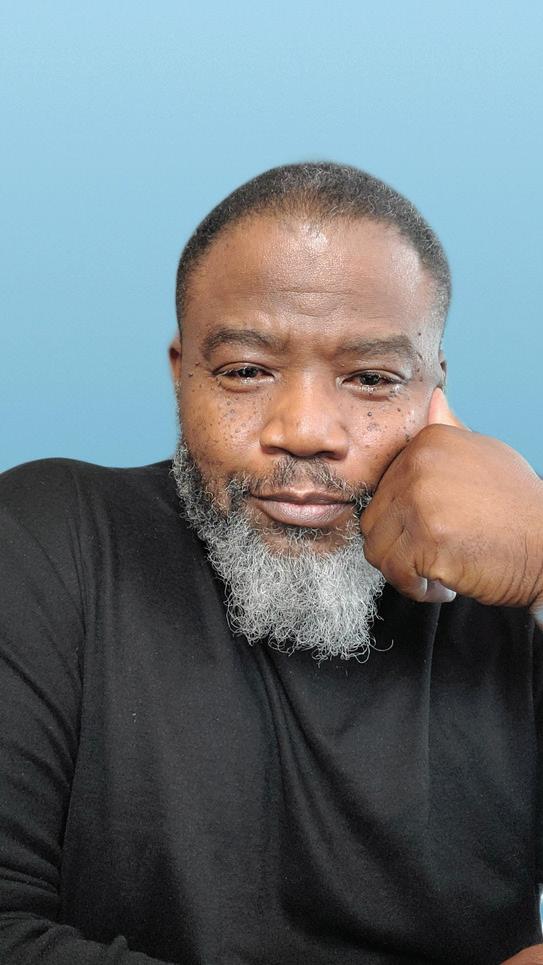

If you need advice on your strategic marketing planning, contact me for a discovery call.
https://calendly.com/mcardwell

mark@cardwellcom.com
www.cardwellcom.com
51
Homegrown Columbus Artist
Evan Williams
Evan Williams is redefining caricature art. His aim with these caricature-esque portraits is not to poke fun or demean the subjects but, rather, to honor and pay tribute to them as cultural icons. The goal is to tell the story through art.

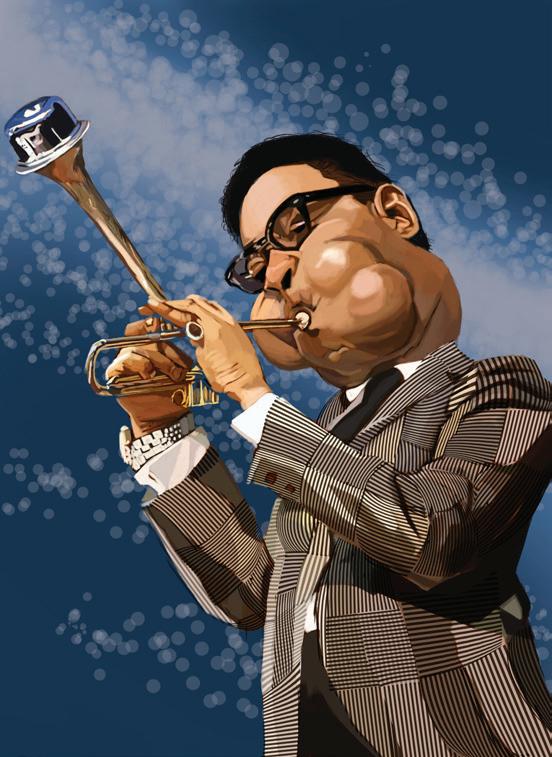
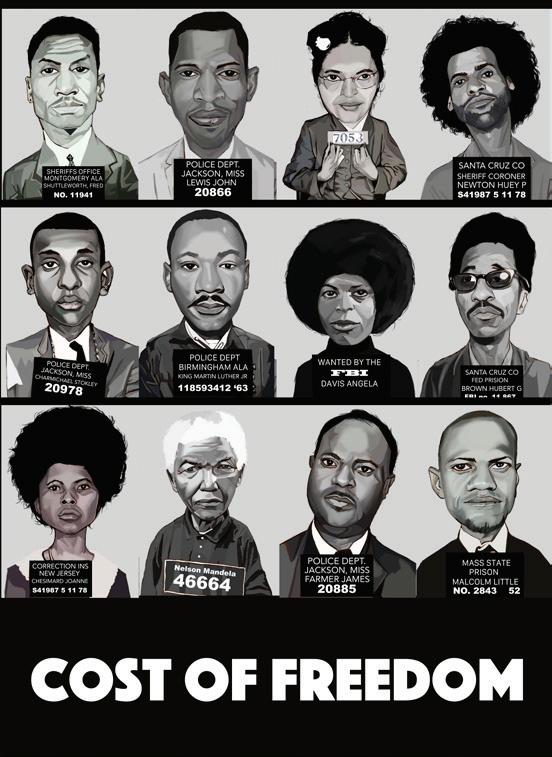

Evan’s story as an artist begins at a very young age. He says his interest in art started when he was just 8 or 9 years old. Throughout his childhood, Evan bounced from town to town whenever his father moved for his military career: Colorado, Virginia, Kentucky — even Bel-gium — and, ultimately, Ohio.
“My mother and father did a really good job of encouraging me and giving me the tools I needed to further myself,” Evan says. “I was always one of those kids who when given the choice would stay in the house to draw and paint. I’ve always been a more creative type.”
In high school, Evan became more serious about his craft. That was due in part to the influ-ence of
a few memorable teachers who empowered him to pursue his passion. He went on to graduate from the Columbus College of Art and Design (CCAD) and today, he’s a visual storyteller in this city.

Now he is looking to take his unique take on caricatures to the new level. He is always ready to challenge himself to reach the next level of his craft. Passionate, creative, and passionately dedicated
to achieving his goals. He is ready for the next chapter in his career.
You can connect with Evan on Instagram @ewill_studio_art or Call or text him at 614-946-5013.
52

53 COMING UP THIS MARCH 2023! Note: DM Your Upcoming Event Digital Flyers to Our Instagram Page @MahoganyColumbus FEATURING: Our Weekly Event Calendar Newsletter and Career & Jobs Bulletin






















 Jay Coleman Vice President, Senior Treasury Management Heartland Bank
Jay Coleman Vice President, Senior Treasury Management Heartland Bank
















 By Joe Motil
By Joe Motil
















 thor, and Certified Life Coach
thor, and Certified Life Coach























